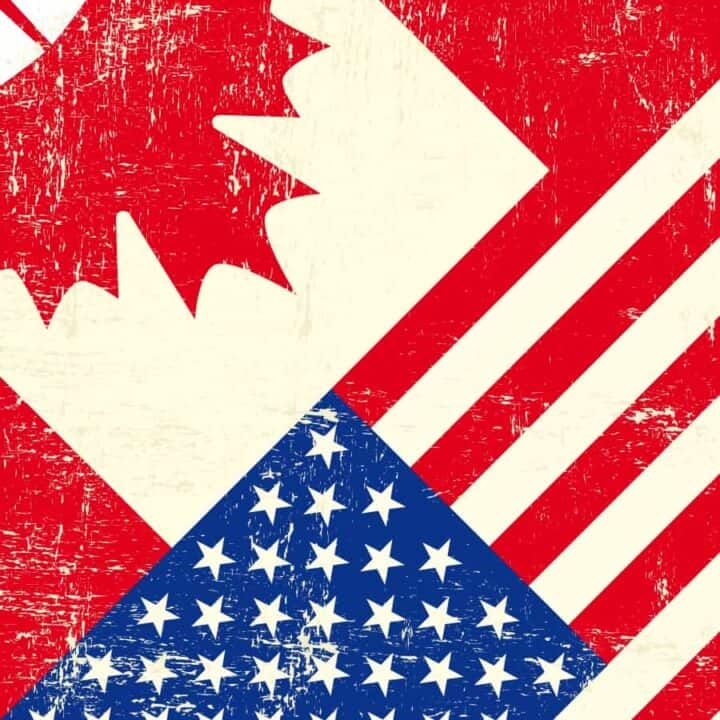Canadian investors can now maximize returns and reduce risks. How? By investing in the most prominent tech and healthcare companies worldwide (Nasdaq 100). According to investors in Canada, the Canadian currency has landed some foreign exchange benefits. That’s so after the recent move and corrections of the Canadian dollar.
Thus, some ETFs can be a powerful way of getting exposure to underlying stocks. We’ll focus on exposure to Nasdaq as a stock exchange. Plus, Nasdaq is an index whereby you can trade stocks and calculate indices. Here are ETFs you may use to buy Nasdaq as a Canadian investor. Also, see our ‘Best ETFs for Canadians‘ post.
UNDERSTANDING WHAT AN ETF IS
Exchange-Traded Funds (ETFs) are groups of stocks managed by an investment company around a theme sector or index. In this case, the company(ies), Nasdaq 100. It sells its shares through these funds and charges an annual management expense fee.
ETFs are somewhat like mutual funds but advanced in stock market investment. Why? Because it’s not as expensive as its similar mutual fund. Plus, you can buy and sell them anytime because they’re faster to buy and sell. Moreover, they only create a tax liability after you sell them.
Our recommendation:

WANT TO INVEST IN NASDAQ? CANADIAN ETFS TO BUY
INVESCO NASDAQ ONE-HUNDRED INDEX ETF – CAD HEDGED (TSX: QQC.F)
Invesco Canada Ltd announced distributions for its ETFs in Jun 2021 to all its Canadian investors. It announced its launch of new ETFs offering investors exposure to various tech stocks and themes. Hence, the company launched two trade ETFs, including QQJR.F and QQJR.
The two ETFs enable the company to build on its innovative solutions offered by Nasdaq and INVESCO. Hence it allows Canadian investors and other clients to have distinct entry points in owning various asset classes.
ISHARES NASDAQ ONE-HUNDRED INDEX ETF (TSX: XQQ)
As a Canadian investor, you may use the sustainability characteristics in your investment process. As such, XQQ has metrics that enable investors to check out their net assets. Thus, XQQ offers insightful and compelling financial prospects.
iShares Core S&P 500 ETFs are U.S stocks sold out in Canada. But, they’re protected against any movement against the Canadian dollar by the U.S dollar. That means that the Canadian dollar value increases and lowers depending on the portfolio stock movement.

ETF INVESTMENT OBJECTIVES
When you’re buying ETF investors, buy ETFs to fill a gap in their existing portfolio. Also, you may buy ETFs if you’re looking for investing themes that might do well. For example, during the lockdown, what did most investors search? They looked for Stocks that would expand through connectivity and those in remote working. Moreover, if want someone else to do the painstaking research into investment options on your behalf, see our ‘Best Robo Advisors in Canada Reviews‘.
You may also want to invest in ETFs where you need to diversify your portfolio. For instance, if you’re going to diversify your portfolio with no real estate or bonds in your investments. What happens where an investor is considerate of risk management in the market.
REASONS TO INVEST
Generally, ETF investment hits all the general investment objectives. These objectives include safety, income, growth, and tax saving. For security, investors aren’t willing to risk their capital to a great extent.
But, for growth, most investors are willing to risk their capital to a certain degree to have more income. They don’t depend on the income from their investment return. Thus, these investments can fluctuate to great extents and lead to significant losses.

HOW TO CHOOSE THE RIGHT ETF
For an existing portfolio, most investors go for classes or groups of assets. Hence you may consider Groups of assets like stocks, bonds, real estate, plus alternative investments. Also, some utilities like energy, consumer goods, and industry may be a good choice.
Sometimes, you may identify something in the general economy likely to do well. In this case, you may want to consider three things: the expense ratio, the dividend or return yield, and the portfolio holdings.
The expense ratio is the key because ETFs in one group offer similar returns. How much you’ll keep is dependent on the expense.
Also, you don’t want to sacrifice all your investment for a dividend yield. Instead, you may consider the one that pays decent dividends and grows its share price.
WHAT CANADIAN ETF TRACKS THE NASDAQ?
You have two Canadian ETFs for tracking the Nasdaq one hundred index ETF. They include:
- Invesco NASDAQ one-hundred Index ETF (TSX: QQC.F).
- iShares NASDAQ 100 Index ETF (CAD-Hedged) (TSX: XQQ).
These two ETFs try to duplicate Nasdaq 100 index returns. Over the past year, Nasdaq 100’s index surged 39.77 percent.
Also, Invesco NASDAQ’s one-hundred Index ETF surged thirty-eight percent over the last year. But, the iShares NASDAQ 100 Index ETF XQQ) surged thirty-eight-point-four in the same period.
The two ETFs buy listed stocks by the Nasdaq 100. QQC.F has 48.1 percent holdings, while XQQ has 49.22 percent in Nvidia, Tesla, and FAAMG.
IS THERE AN ETF FOR THE ENTIRE NASDAQ?
Yes, QQQ is a high-growth fund that holds high-growth companies. QQQ is like a tech standard to determine how well the technology sector industry (Nasdaq 100) is doing. Hence, QQQ can scale faster, and it’s an ETF worth considering.
Why? Because it’s a lot easier for a site like, say, Facebook to have 10 million more users than it is for Coca-Cola to produce ten million more bottles.
If Nasdaq 100 goes 1 percent up during the day, QQQ goes up by one percent also. Hence, if you’re a young Canadian investor seeking growth, consider a tech fund like QQQ.
What’s more? The management expense ratio is o.2. Fewer management fees mean lesser expenditure. The lesser the expense, the better. Plus, the higher the percentage, the lesser you’re most likely to hold it longer.
BUYING U.S. ETFS IN CANADA
You can trade with the listed Canadian ETFs on the U.S TSX. Likewise, you may trade U.S-listed ETFs in stock exchange markets like NYSE. Thus, you can deal with the U.S-listed ETFs available for Canadian investors and other international investors.
Here, you may find the U.S. ETFs you need. You only need to link up with a provider like vanguard iShares to access information or invest in the listed ETFs. Thus, a Canadian investor will only need an account like Questrade or other to trade.

To invest in the U.S ETFs, consider opening a U.S dollar account to fund using your own U.s Dollars. This way, you may avoid extra fees from your broker while converting the currency.
WHAT ARE THE TOP NASDAQ 100 ETFS TO BUY?
TQQQ
This one triples your leverage, meaning it triples the on-the-line. Thus, when Nasdaq goes up by three percent, then TQQQ goes up by three percent. TQQQ seems like a great deal, but there are some risks because sometimes there’s no way to achieve the intended goal. Yet, when it does, you’ll have three times the on-the-line.
You may consider buying this ETF if you’re bullish on the stock market. Also, where you want to buy a two or three-day hold because it has a high expense ratio. If you want the most of your buck and you are ready to lose three times the amount, you may look into TQQQ.
QLD
QLD is pretty much the same as TQQQ, except it’s a double ETL. Thus, it allows twice the amount of Nasdaq 100. QLD has a high expense ratio, so you may not want to hold it over a long time in the stock market.

INVERSE ETFS LIKE PSQ, THE INVERSE OF QLD AND SQQQ
These are the ETFs that go up when the Nasdaq 100 goes down. So, when the stock market goes down by minus one percent, PSQ goes up by one percent. But, in Inverse ETFs, the stock quality gets a little bit low. So, YOU may want to be careful because the Inverse ETFs have low stock investments.
Hence you may consider the Inverse of QLD whereby you want the double ETF when Nasdaq 100 goes down by 1 percent. Plus, when the market lowers by one percent, SQQQ should go up by one percent. With a 0.95 percent expense ratio, these three inverse ETFs may not be something to hold on to for an extended period.
How can you use inverse ETFs? Inverse ETFs, like SQQQ, can help you leverage your stock portfolio up for a couple of days or weeks. These Inverse ETFs give an excellent exposure for a small amount of outlay. That’s vital to hedge your risk or to speculate.

THE BOTTOM LINE
You’ve now seen the top-rated Nasdaq 100 ETFs for individual Canadian investors. These ETFs will go a long way in your investment strategy in the information technology sector. Some ETFs like QQQ have had a promising past performance with an increasing net asset value.
Where the values continuously change, you may consider diversifying your portfolio. Diversification helps to reflect future values change. Finally, consider the investments that may smoothen your income curve.